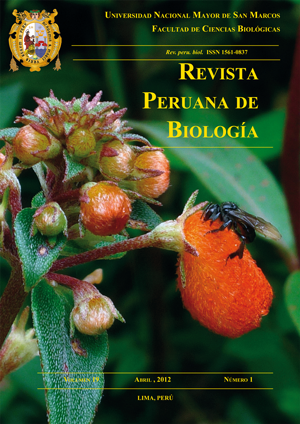Thermal ecology of Microlophus occipitalis (Sauria: Tropiduridae) in the Plain Dry Forest of Tumbes, Peru
DOI:
https://doi.org/10.15381/rpb.v19i1.794Keywords:
lizard, thermal ecology, Cerros de Amotape National Park, TumbesAbstract
The thermal ecology of Microlophus occipitalis Peters 1871 in the plain dry forests of Tumbes (northewestern Peru) was studied. Mean body temperature was 36.1 ± 1.8 ºC, similar to body temperatures exposed by Microlophus peruvianus in northern Peru. There were no differences between body temperature and degree of thermoregulation of males and females, due to a possible association to their social structure and microhabitat use. Air and substrate temperature affects the body temperature of Microlophus occipitalis, where air temperature accounts for a significant proportion of body temperature variation. We suggest more detailed studies on this lizard species, especially under climate change scenarios in northwestern Peru.Downloads
Downloads
Published
Issue
Section
License
Copyright (c) 2012 Juan C. Jordán A., José Pérez Z.

This work is licensed under a Creative Commons Attribution-NonCommercial-ShareAlike 4.0 International License.
AUTHORS RETAIN THEIR RIGHTS:
a. Authors retain their trade mark rights and patent, and also on any process or procedure described in the article.
b. Authors retain their right to share, copy, distribute, perform and publicly communicate their article (eg, to place their article in an institutional repository or publish it in a book), with an acknowledgment of its initial publication in the Revista Peruana de Biologia.
c. Authors retain theirs right to make a subsequent publication of their work, to use the article or any part thereof (eg a compilation of his papers, lecture notes, thesis, or a book), always indicating its initial publication in the Revista Peruana de Biologia (the originator of the work, journal, volume, number and date).






